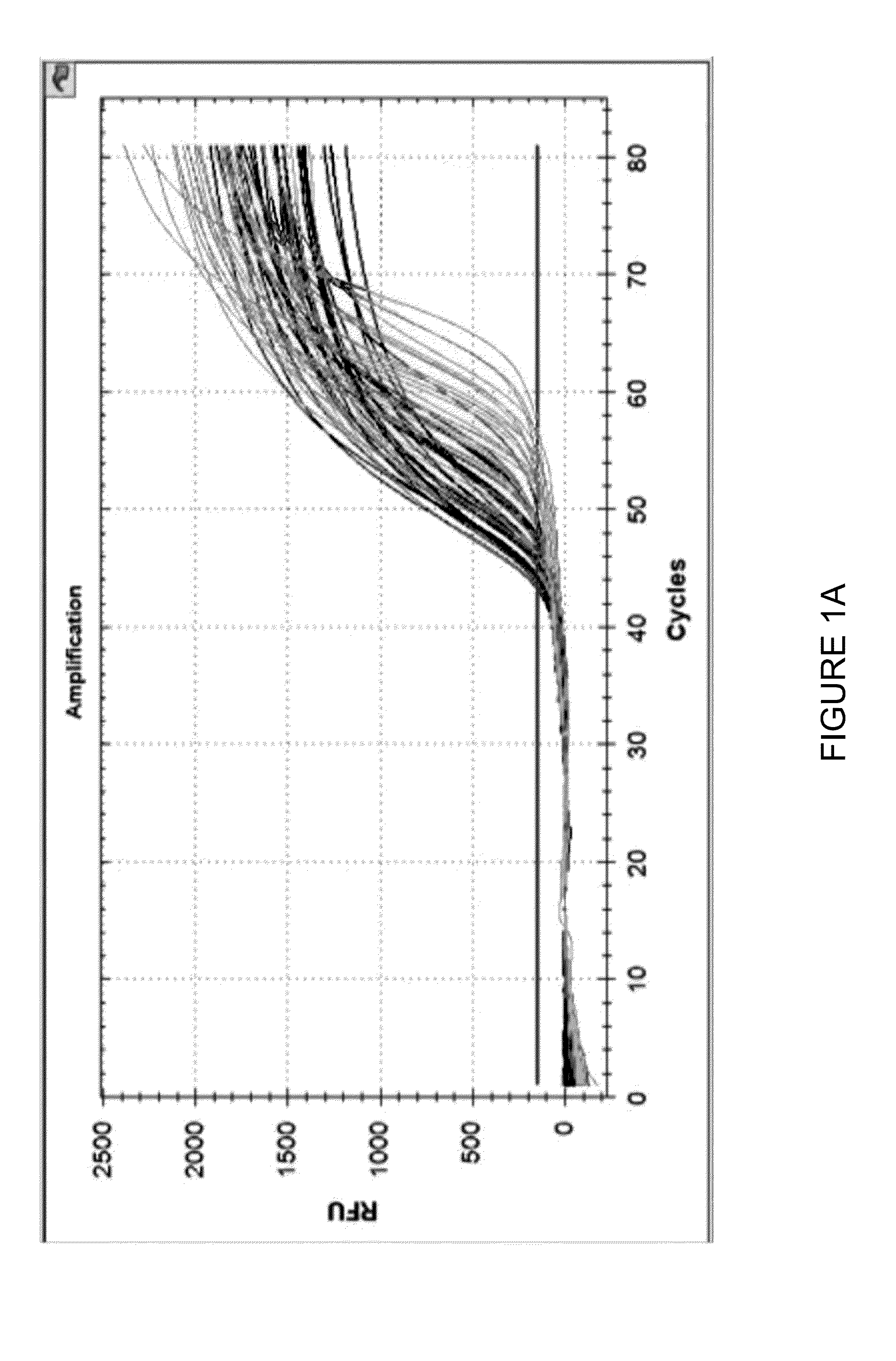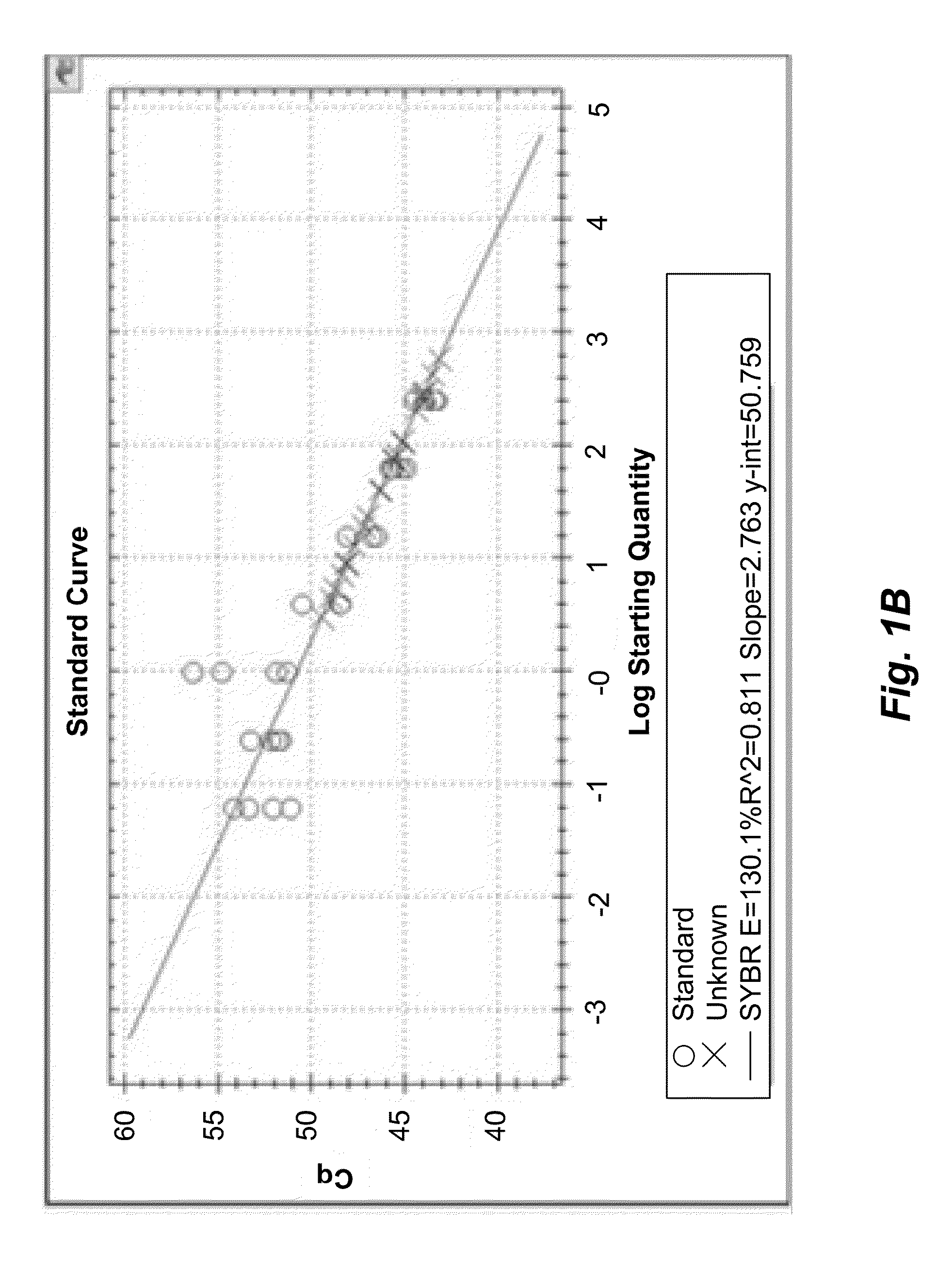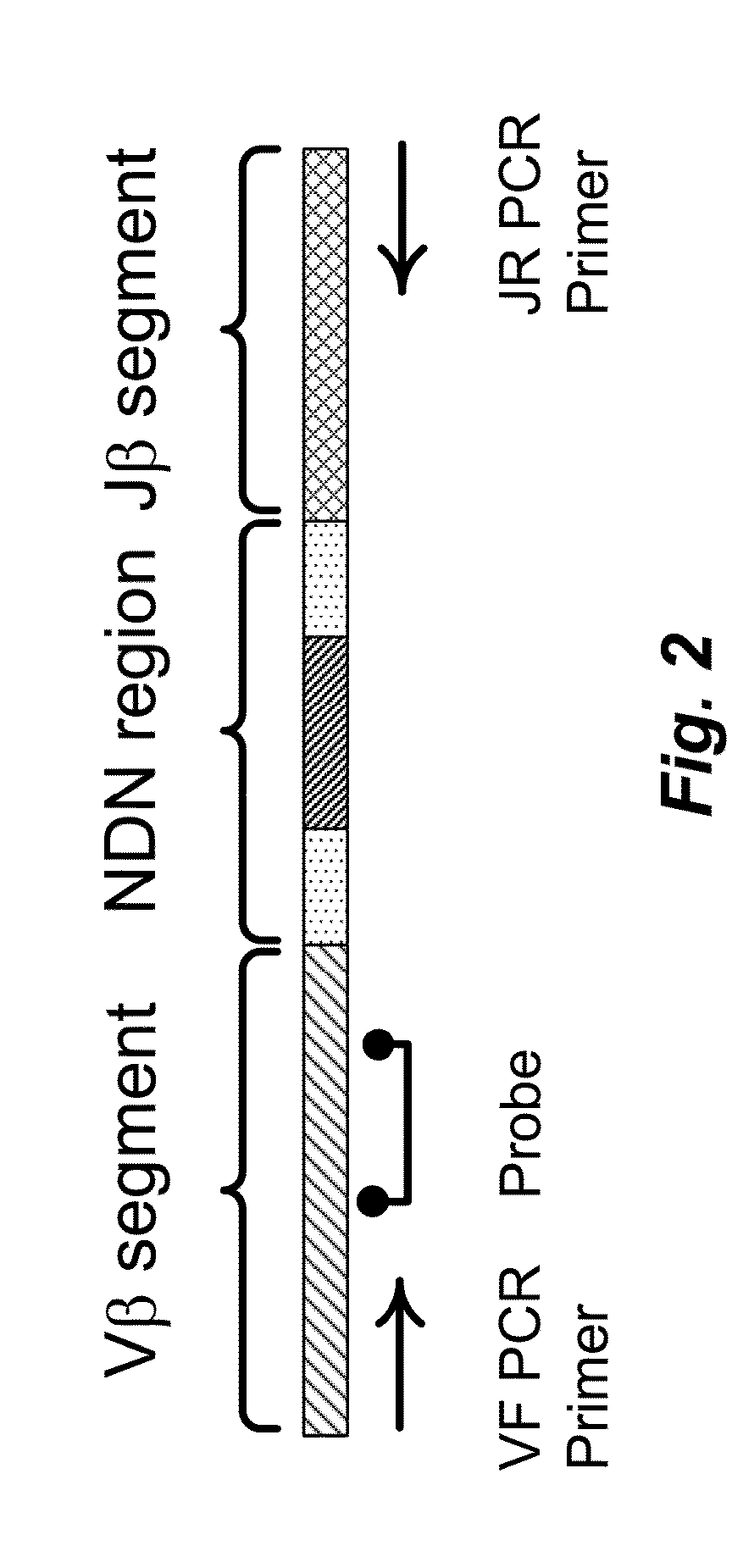Quantification of adaptive immune cell genomes in a complex mixture of cells
a technology of adaptive immune cells and complex mixtures, applied in the field of quantitative analysis of adaptive immune cell genomes in complex mixtures of cells, can solve the problems of inability to obtain meaningful quantitative data from such approaches, limited efforts to obtain meaningful quantitative data, and inability to readily isolate adaptive immune cells. to achieve the effect of reducing and increasing the relative representation of adaptive immune cells
- Summary
- Abstract
- Description
- Claims
- Application Information
AI Technical Summary
Benefits of technology
Problems solved by technology
Method used
Image
Examples
example 1
Quantification of Relative T Lymphocyte DNA Representation from T Cells in Normal Tissues and from Tumor—Infiltrating T Lymphocytes in a Tumor Sample
[0161]Samples of peripheral blood, fresh adipose biopsies, frozen muscle biopsy, and skin biopsies were processed for DNA extraction using the following procedure:
[0162]Samples of 1×104 to 1×106 fresh, frozen, or fixed cells were lysed in 200 ul of lysis buffer (50 mM TrisHCl pH7.4, 250 mM NaCl, 0.1% SDS, 0.5% Triton-X100) and 20 ul of proteinase K (10 mg / ml) using the kitted ATL buffer and proteinase K reagents from the Qiagen Blood and Tissue kit (Qiagen #69504, Qiagen Corp., Valencia, Calif.), and incubated at 56° C. for one hour with mixing every 20 minutes. The lysate was diluted with 200 ul of an ethanol / buffer mixture (20 mM Tris, pH 7.5, 2.0 mM EDTA, in 50% v / v ethanol) and mixed briefly. Alternatively, the AL buffer of the Qiagen Blood and Tissue kit was used. SDS precipitates formed on occasion, but were not observed to advers...
example 2
Quantification of Tumor—Infiltrating T Lymphocytes in a Tumor Sample Using a TCRδ V-Region Specific qPCR Probe
[0166]Tumor-infiltrating T lymphocytes (TILs) were quantified using a multiplex real-time PCR assay as follows.
[0167]Multiplex Primer Sequences:
[0168]The multiplex oligonucleotide primer sets that were used had the sequences shown in Table 1. The “r” in Table 1B represents a ribonucleotide base in the oligonucleotide sequence and “ / 3SpC3 / ” represents a 3′ three carbon spacer on the hydroxyl group preventing polymerase extension and amplification. The DNA repair endonuclease cleaves the oligonucleotide at the ribonucleotide after hybridization to a complementary sequence, creating an unblocked hydroxyl group that can be extended by a polymerase.
[0169]Assay Reagents:
[0170]20 μl PCR reactions were set up having final concentrations of 1× Taq polymerase buffer, 10 ng / ul analyte DNA, 1 micromolar TCRBV_RN2 oligonucleotide primer mix (Table 1), 1 micromolar TCRBJ_RN2 oligonucleoti...
example 3
Quantification of Tumor—Infiltrating T Lymphocytes in a Tumor Sample Using a V7-Specific qPCR Probe
[0180]TCRB V7+ tumor-infiltrating T lymphocytes are quantified using a multiplex real-time PCR assay as follows.
[0181]Multiplex Primer Sequences:
[0182]The multiplex primer sequences are provided in Table 1. The “r” represents a ribonucleotide base in the oligonucleotide sequence and “ / 3SpC3 / ” represents a 3′ three carbon spacer on the hydroxyl group preventing polymerase extension and amplification. The DNA repair endonuclease cleaves the oligonucleotide at the ribonucleotide after hybridization to a complementary sequence, creating an unblocked hydroxyl group that can be extended by a polymerase.
[0183]Assay Reagents (Volumes and Concentrations):
[0184]The assay consists of a 20 μl PCR reaction at final concentrations of 1× Taq polymerase buffer, 10 ng / ul analyte DNA, 1 micromolar TCRBV_RN2 oligonucleotide primer mix, 1 micromolar TCRBJ_RN2 oligonucleotide primer mix) 100 nanomolar TaqM...
PUM
| Property | Measurement | Unit |
|---|---|---|
| mass | aaaaa | aaaaa |
| pH | aaaaa | aaaaa |
| temperature | aaaaa | aaaaa |
Abstract
Description
Claims
Application Information
 Login to View More
Login to View More - R&D
- Intellectual Property
- Life Sciences
- Materials
- Tech Scout
- Unparalleled Data Quality
- Higher Quality Content
- 60% Fewer Hallucinations
Browse by: Latest US Patents, China's latest patents, Technical Efficacy Thesaurus, Application Domain, Technology Topic, Popular Technical Reports.
© 2025 PatSnap. All rights reserved.Legal|Privacy policy|Modern Slavery Act Transparency Statement|Sitemap|About US| Contact US: help@patsnap.com



